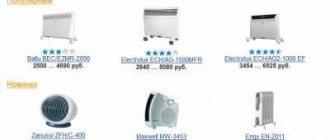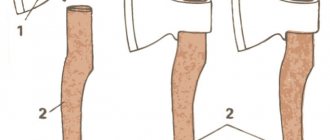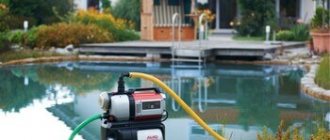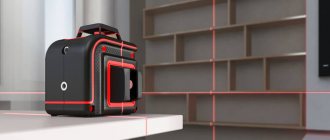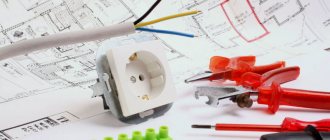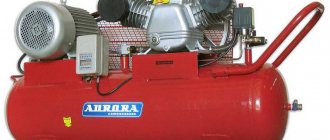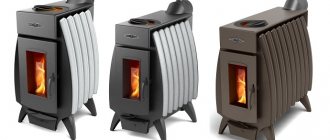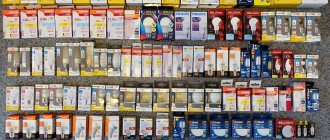Welding is a complex, labor-intensive process. Therefore, even when choosing a household welding machine for your home, you need to take into account many parameters:
- Type of power supply: it is preferable to choose models operating from a standard 220 V network.
- What materials are you planning to work with: for cast iron and copper - you need a device with a current rectifier; for ferrous metal - a simple model is suitable.
- The thickness of the metal being welded is directly related to the strength and power of the current.
Our rating includes the best welding inverters for domestic needs.
Our overall device rating
- WESTER IWT200 – a wide range of additional functions
- Aurora MINIONE 1800 – a rich set of accessories
- Svarog PRO ARC 160 (Z211S)
- Resanta SAI 190PROF – suitable for operation in low voltage networks
- MARS MMA 2000 (case) – the most profitable welding
- CEDAR MMA 220F – easy to use
- Summarize
WESTER IWT200 – a wide range of additional functions
The average cost is 9,500 rubles.
Specifications:
- Max. welding current - 200 A
- Power - 4800 W
- Total power - 5160 VA
- Voltage - 220 V
- Min. input voltage - 170 V
- Output current - 10-200 A
- Open circuit voltage - 75 V
- Current consumption - 20.3 A
- Min. electrode diameter - 1.6 mm
- Max. electrode diameter - 5 mm
- Type of welding machine - inverter
- Type of welding - arc (electrode, MMA)
The inverter weighs 5.87 kg and is practical and easy to use. The case is equipped with a handle, it is possible to connect a transport strap. For welding, consumable electrodes with a diameter of 1.6 to 5 mm are used. The model is equipped with additional functions such as “hot start”, anti-sticking, arc forcing. The device copes with voltage surges and drops up to 170 V.
Advantages:
- Protection against overheating and overload.
- Compactness.
- Built-in forced cooling fans.
- IGBT technology, which helps increase efficiency.
- Low power consumption – 30–40% less than traditional welding machines.
- A long electrode holder cable and a reliable mass clamp allow you to work with any extended object.
- A separate board is allocated for the control elements, which simplifies and reduces the cost of repair in the event of a breakdown.
Flaws:
- Suitable only for beginners, not intended for complex household work.
What is the difference between an inverter and a transformer unit?
If you need to compare whether it is better to work with an inverter or transformer welding machine, you need to understand how difficult one or another welding procedure is, which is more in demand, since both equipment has additional capabilities.
Transformer winding for a welding machine.
The modernized operating mode greatly simplifies the process.
An inverter semi-automatic or transformer is suitable for welding aluminum, stainless steel and other materials with a complex structure. The inverter makes the process easy and fast. It is also easy to transport, care for, and store, since it does not require certain operating conditions.
The transformer apparatus has almost the same characteristics, but the difference lies in the reliability of the seam resulting in a more economical option. The transformer consumes a lot of energy, which makes the inverter more attractive.
For a variety of continuous welding applications, a transformer will be the best option, but it can only handle simple types of fastening.
Aurora MINIONE 1800 – a rich set of accessories
The average price is 8,000 rubles.
Specifications
- Mains voltage: 220 V
- Current in MMA mode: 20 - 180 A
- MMA current at 100% duty cycle: 31 A
- Rated voltage: 63V
- Protection class: IP 21
- Power factor (COS?): 0.73
- Overall dimensions: 320x123x220
- Weight: 5 kg.
The inverter is built on advanced IGBT technology and SMT components. The kit includes a two-meter cable, a ground clamp, an electrode holder, and a case for storage and transportation. The device is successfully used in various fields, including construction, agriculture, and when installing metal structures. But the operating voltage must be at least 160 V.
Advantages:
- “Intelligent” cooling: the fan turns on only if the board components and power elements are heated.
- Arc force: the moment a drop of metal separates from the electrode, the welding current increases.
- Hot start.
- Antistick – automatic reduction of welding current in case of electrode sticking. The welder has time to separate the electrode and continue working.
See also: welding machine Forsazh
Flaws:
- Poor quality plastic case.
Which welding machine can be recommended for home and garden from these 2 options? Choose by price: where is cheaper.
Useful video
Watch the video, all the pros and cons of both are collected there:
And another opinion:
Conclusion
We've given you enough information to make your choice. Decide and choose for yourself. You can even try to make a transformer welder with your own hands. But don't forget the good proverb: the miser pays twice.
We wish you success!
Sections: Welding equipment
Tags: Inverter welding machines, transformers
Previous article: Repair of a welding transformer Next article: Welding transformer: device and principle of operation
Svarog PRO ARC 160 (Z211S)
Cost – 9000 rubles.
Specifications:
- Mains voltage: 220 V (±15%)
- Current in MMA mode: 10 - 160 A
- MMA current at 60% duty cycle: 160 A
- Electrode diameter (min - max): 1.5-3.2 mm
- Protection class: IP 21
- Insulation class: F
- Power factor (COS?): 0.70
- Article: Z211S
- Overall dimensions: 313×130×250
- Weight: 4.70 kg.
This device is an innovative version of the 2014 inverter. It is capable of operating at low voltage - from 175 V. The main scope of application is surfacing and manual arc welding with an electrode with a diameter of less than 3.2 mm. Manual TIG welding is also possible. But for this you will have to acquire a valve burner.
Among the features of the model are a knob for smooth adjustment of the welding current, an arc force regulator, and a digital indicator on which the current welding current is displayed.
Advantages:
- Five-year warranty service for the device (with maintenance, starting from the third year of use).
- Light weight – 4.7 kg.
- Metal spattering during welding is minimal.
- Compactness.
- Highly stable arc combustion.
- Developed dealer network - about 125 services in Russia.
- Useful features: arc force, anti-stick and quick start.
Flaws:
- Some users complain about the machine triggering in cases where the seam length exceeds 5 cm.
Which welding machine is better to buy for home?
In the courtyard of a private house or in a country house, you have to work with round and profile pipes, angles and sheet metal. Most often, the cross-section of the walls does not exceed 2-4 mm. On the other hand, you may need to weld a channel with a wall of 6-10 mm. Which welding machine to choose for your home depends on the tasks ahead, which include the thickness of the material being welded and the types of metals. The equipment is divided by type of power source and welding modes. Let's discuss this in order.
Which power source is best to use for home?
There are several types of welding power sources. The quality of the seam and the ability to connect different materials depend on the choice. Let's consider what is most suitable for welding at home.
1. Inverters
They are connected to a 220 V or 380 V network and convert low-frequency alternating current into direct current, and then again into alternating current, but with a high frequency. The output produces a constant voltage. The equipment has compact dimensions and is suitable for welding ferrous metals, cast iron and stainless steel. Models with an AC/DC switch are even designed for aluminum welding.
Welding inverter with cover removed.
2. Rectifiers
They can operate from both single-phase and three-phase networks. They lower the volts and increase the amperes using the transformer coils, and at the output they rectify the current to constant. They have large dimensions and are often equipped with wheels for transportation. Easily welds carbon and stainless steel.
Welding rectifier.
3. Transformers
They work on a similar principle as rectifiers, only without the last phase of the cycle. Welding is carried out using alternating current. Ferrous metals are best welded. The dimensions of the equipment depend on the power. There are compact devices for wearing on the shoulder and larger ones for stationary installation.
Welding transformer.
For welding at home or in the country, it is best to choose inverters. They produce direct current, which improves the quality of the seam, and have useful features that make it easier for beginners. The price of the product depends on the manufacturer and the capabilities of the device. A cheaper option would be a small transformer, but it is only suitable for non-critical structures (putting up a fence, welding a loop on a gate). It is better for them not to cook heating and plumbing due to alternating current, which increases the splashes of molten metal.
What type of welding is best for home use?
In addition to the power source, the equipment has different modes designed for different types of welding. Having delved into their capabilities, we can better understand how to choose a welding machine for the home.
1. MMA
The abbreviation refers to manual arc welding with coated electrodes. The metal rod melts and creates a seam, and the electrode coating forms a protective cloud. After hardening, a slag crust is present on the surface. Suitable for welding ferrous metals, cast iron. When replacing electrodes with specialized ones, you will be able to cook stainless steel and aluminum. But the quality of the seams greatly depends on the skill of the user.
The equipment is suitable for welding a house to install a fence, gazebo, greenhouse, or replace a heating pipe. Such models are not expensive.
Manual arc welding process diagram.
Resanta SAI 190PROF – suitable for operation in low voltage networks
The average cost is 14,000 rubles.
Technical characteristics of Resant
- Mains voltage: 220V
- Current in MMA mode: 10 - 190 A
- Electrode diameter (min - max): 5 mm
- Rated voltage: 65V
- Protection class: IP 21
- Article: 65/30
This powerful inverter-type welding machine for home and garden is famous for its ease of operation, reliability and functionality. It is used for manual electric arc welding. And this brand is perhaps one of the most famous in Russia. Stable arc burning ensures a dense, even seam. Special PFC technology allows operation under voltage drops of up to 100 V. The device can also be connected to a 4.6 kW generator.
Advantages:
- Convenient arc force adjustment.
- Useful additional functions are “anti-stick” and “hot start”.
- Compact, convenient transport handle.
- Good penetration and minimal metal spattering.
- Digital display showing the welding current.
- Lightweight: the device weighs only 8.9 kg.
- Suitable for welding any ferrous metal, stainless steel, copper with a thickness of more than 0.3 mm.
- Energy savings compared to similar devices – 30% (due to reduced electromagnetic field).
Flaws:
- Welding leads are too short.
- This device could have been at the top of our rating if not for the large number of not very good reviews on various construction forums.
Recommendations for the use of household inverters
When starting to work with a home appliance, you should adhere to the basic rules and recommendations:
- The size of the electricity consumed depends on the diameter of the electrode. It is important to take this fact into account so as not to burn electrical appliances in the area.
- Each electrode corresponds to a certain minimum current strength. Attempting to reduce the current will result in welding failure.
For each current you need to select the appropriate electrode
- For welding work, it is important to have protective clothing: canvas gloves, a jacket made of rough fabric, a helmet.
When performing welding work, the use of protective clothing is mandatory.
MARS MMA 2000 (case) – the most profitable welding
The average price is 7,000 rubles.
Specifications
- Supply voltage, V - 220
- Supply frequency, Hz - 50/60
- Power consumption, kVA - 5.3
- Maximum input current of the network, A - 24
- Welding current control range, A - 10–160
- PV, % - 60
- Open circuit voltage, V - 70
- Efficiency,% - 85
- Power factor - 0.93
- Insulation class - F
- Degree of protection - IP21
- Weight, kg - 7
The inverter is built on the basis of PWM and IGBT technologies. The following equipment is used for welding: electrodes of rutile and alkaline type, made of cast iron, stainless steel. The device is ideal for those who value mobility. A high level of work safety is ensured by the antistatic and moisture-proof housing. An important role is played by the function that reduces the no-load voltage.
Advantages:
- Stable arc ignition and low power consumption.
- High performance.
- Long service life.
- Automatic overload protection system.
- High-quality penetration.
- The efficiency reaches 85%.
- Autovoltage.
- The design is based on easily replaceable circuit boards.
- The delivery set includes an electrical holder and a terminal.
- Reliable automatic overload protection.
Flaws:
- TIG welding is not possible.
Welding methods: lap, butt, tee and corner
The work of a welder involves several methods of welding parts: overlap, butt, T-joint and corner. The seam is made with an inclined electrode, except for butt welding, when the electrode is held almost straight. When doing fillet welding, it is recommended for a beginner to place the parts to be welded “in a boat” rather than in an L shape; in this case, it is easier to achieve a high-quality seam with well-welded edges.
CEDAR MMA 220F – easy to use
The average price is 8,000 rubles.
Specifications
- Mains voltage: 220 V
- Power at maximum load: 5.94 kW
- Current in MMA mode: 20 - 220 A
- Electrode diameter (min - max): 1.6-5.0 mm
- Protection class: IP 21
- Article: mma220f
- Overall dimensions: 320x123x220
- Weight: 5 kg.
The inverter of this company is used for electric arc welding with consumable electrodes with a diameter of 1.6 to 4 mm. If you connect a gas cylinder and a torch, you can carry out argon arc welding.
The device does not lose its functionality even when the voltage drops to 140 V. Therefore, it is often used for out-of-town work.
PROS:
- High-quality and even seam - due to the use of inverter technology.
- The presence of many useful functions: hot start, arc forcing, anti-sticking.
- Lightweight, compact and easy to control.
- Tunnel-type cooling system with a fan that automatically turns on at a certain temperature.
- Innovative transistors operating on the PWM principle.
- Copper tracks - minimize the likelihood of burnout.
- A reliable microprocessor that controls the operation of the device.
- There are blinds built into the cooling system that protect internal mechanisms from foreign particles and dirt.
CONS:
- There is no standard scoreboard.
Preparing the elements to be welded
Before starting welding, the joints between parts must be cleaned of dirt and rust and moisture removed. If the thickness of the part is more than 3 mm, then it is better to chamfer the edges; this will allow for better welding of the elements, which is important, especially for a beginner. We recommend that you do not skimp on time and prepare the parts to be welded well.
